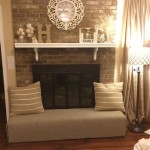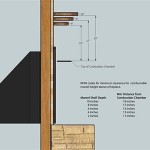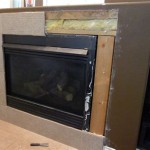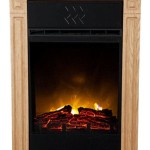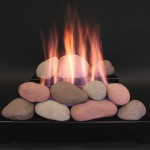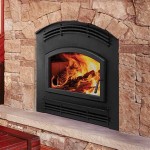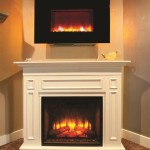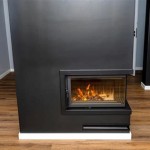Natural Gas Ventless Fireplace Insert: A Comprehensive Guide
Natural gas ventless fireplace inserts offer an appealing alternative for individuals seeking the warmth and ambiance of a fireplace without the complexities and expense associated with traditional vented systems. These inserts are designed to fit into existing fireplace openings, transforming them into efficient and aesthetically pleasing heating sources. This article provides a comprehensive overview of natural gas ventless fireplace inserts, covering their functionality, benefits, safety considerations, installation, and maintenance.
A ventless, or vent-free, fireplace insert burns natural gas and expels the combustion products directly into the room. This design eliminates the need for a chimney or venting system, making them suitable for homes where traditional fireplaces are not feasible or where the cost of installing a chimney is prohibitive. The technology relies on precise engineering and safety features to ensure complete combustion, minimizing the production of harmful byproducts.
Choosing the right natural gas ventless fireplace insert involves considering various factors, including heating capacity, aesthetic appeal, safety features, and installation requirements. A thorough understanding of these aspects is essential for making an informed decision and ensuring safe and efficient operation.
Understanding the Functionality of Ventless Fireplace Inserts
The operation of a natural gas ventless fireplace insert hinges on its ability to achieve near-complete combustion. This process involves the precise mixing of natural gas and air, facilitated by a specialized burner design. The burner ensures that the gas is burned efficiently, minimizing the production of carbon monoxide and other pollutants. Many ventless fireplaces are equipped with oxygen depletion sensors (ODS), which automatically shut off the gas supply if the oxygen levels in the room drop below a safe threshold.
The heat generated by the burning gas is radiated directly into the room, providing supplemental heating. Some models also incorporate a fan to circulate the warm air more effectively. The heating capacity of a ventless fireplace insert is measured in British Thermal Units (BTUs), and the appropriate BTU rating should be selected based on the size of the room being heated. Overestimating the BTU requirement can lead to excessive heating and discomfort, while underestimating it may result in insufficient heating.
Modern ventless fireplace inserts often come equipped with features such as remote controls, adjustable flame settings, and programmable thermostats. These features enhance user convenience and allow for precise control over the heating output and aesthetic appearance of the fireplace.
Benefits of Choosing a Natural Gas Ventless Fireplace Insert
Compared to traditional wood-burning fireplaces or vented gas fireplaces, ventless inserts offer several distinct advantages. One of the primary benefits is the ease of installation. Since no venting is required, the installation process is typically straightforward and less expensive than installing a chimney or venting system. This makes ventless inserts a practical option for homeowners who want to add a fireplace without undertaking major construction work.
Another advantage is the higher energy efficiency. Because the heat is not lost through a chimney, ventless fireplaces can achieve efficiencies of up to 99%. This translates to lower heating costs and reduced energy consumption compared to vented fireplaces, which typically have efficiencies of around 70-80%. The ability to retain heat within the living space contributes to significant energy savings over time.
Ventless fireplaces also offer greater flexibility in terms of placement. They can be installed in almost any room of the house, as long as a natural gas supply is available. This provides homeowners with more options for creating a cozy and inviting atmosphere in various areas of their homes.
Furthermore, ventless fireplaces are generally cleaner and more convenient than wood-burning fireplaces. There is no need to chop wood, build a fire, or clean up ashes. The gas flame produces no smoke, soot, or creosote, which eliminates the risk of chimney fires and reduces the need for regular cleaning.
Safety Considerations for Ventless Fireplace Inserts
While ventless fireplace inserts are designed with safety in mind, it is crucial to understand and adhere to certain safety precautions to ensure their safe operation. The primary concern with ventless fireplaces is the potential for carbon monoxide (CO) buildup. Although modern units are equipped with ODS sensors, it is essential to install a carbon monoxide detector in the room where the fireplace is located.
Proper ventilation is also crucial. While the term "ventless" implies that no ventilation is needed, it is recommended to provide some level of fresh air circulation in the room. This can be achieved by opening a window slightly or using a ventilation fan. Adequate ventilation helps to prevent the buildup of pollutants and ensures a healthy indoor air quality.
It is also important to ensure that the fireplace insert is properly sized for the room. Using an oversized unit in a small room can lead to overheating and excessive humidity. The manufacturer's guidelines should be followed carefully when selecting the appropriate BTU rating for the intended space. Additionally, regular maintenance, including cleaning the burner and inspecting the ODS sensor, is essential for ensuring safe and efficient operation. It is recommended to have the fireplace inspected annually by a qualified technician.
Strict adherence to the manufacturer's instructions and local building codes is paramount. Many jurisdictions have regulations regarding the installation and use of ventless fireplaces, including restrictions on the size of the unit and the ventilation requirements. Failure to comply with these regulations can result in safety hazards and legal penalties.
Never use the fireplace to dry clothes or other flammable materials. Keep combustible materials, such as curtains and furniture, at a safe distance from the fireplace. Children and pets should be supervised when the fireplace is in operation to prevent accidental burns.
Finally, it is important to be aware of the potential for increased humidity when using a ventless fireplace. The combustion process produces water vapor, which can raise the humidity level in the room. In some cases, this can lead to condensation and mold growth. Using a dehumidifier can help to control humidity levels and prevent these issues.
Installation and Maintenance of Natural Gas Ventless Fireplace Inserts
The installation of a natural gas ventless fireplace insert typically involves connecting the unit to a natural gas supply line, placing it within the existing fireplace opening, and securing it in place. It is highly recommended to have the installation performed by a qualified professional to ensure that it is done safely and in accordance with local codes. Improper installation can lead to gas leaks, carbon monoxide emissions, and other hazards.
Before installing the insert, the existing fireplace should be thoroughly cleaned and inspected. Any debris or obstructions should be removed to ensure proper airflow. The gas supply line should be inspected for leaks and properly connected to the insert. The insert should be positioned securely within the fireplace opening and properly vented in accordance with the manufacturer's instructions.
Regular maintenance is essential for ensuring the safe and efficient operation of a ventless fireplace insert. The burner should be cleaned periodically to remove any dust or debris that may have accumulated. The ODS sensor should be inspected to ensure that it is functioning properly. The pilot light should be checked regularly to ensure that it is burning cleanly and consistently.
The fireplace should be inspected annually by a qualified technician. The technician can perform a thorough inspection of the entire system, including the burner, gas supply line, ODS sensor, and ventilation system. The technician can also identify and address any potential problems before they become serious safety hazards.
Keep the area around the fireplace clean and free of combustible materials. Dust and debris can accumulate on the surface of the fireplace and ignite, posing a fire hazard. Combustible materials, such as curtains and furniture, should be kept at a safe distance from the fireplace.
If you smell gas, immediately turn off the gas supply to the fireplace and ventilate the area. Do not use any electrical devices or open flames until the gas has dissipated. Contact a qualified gas technician to inspect the system and repair any leaks.
By following these installation and maintenance guidelines, you can ensure the safe and efficient operation of your natural gas ventless fireplace insert for many years to come.
In conclusion, natural gas ventless fireplace inserts provide a practical and efficient solution for adding warmth and ambiance to a home. Understanding their functionality, benefits, safety considerations, installation and maintenance is essential for making an informed decision and ensuring its proper use.
:max_bytes(150000):strip_icc()/ventless-gas-fireplaces-4160746-hero-f9d4bdcd9bd446eb84406de306f790ba.jpg?strip=all)
How To Pick Out A Ventless Gas Fireplace

Ventless Fireplaces Natural Gas And Propane

Gas Fireplaces Inserts And Stoves N Fixin S

Procom 26 000 Btu Vent Free Dual Fuel Propane And Natural Gas Indoor Fireplace Insert With T Stat Control 170082 The Home Depot

Monessen 33 Inch Solstice Vent Free Gas Fireplace Insert Intermittent Pilot

Duluth Forge 27 In W 26000 Btu Black Vent Free Dual Burner Gas Fireplace Insert The Inserts Department At Com

Small Fireplaces I Hearthcabinet Ventless

What Is A Ventless Gas Fireplace Experts In Gaithersbutg Md

Vent Free Gas Fireplaces Inserts Stoves Napolis Godby Hearth And Home

Considering A Ventless Gas Fireplace Here S What You Need To Know Bob Vila

